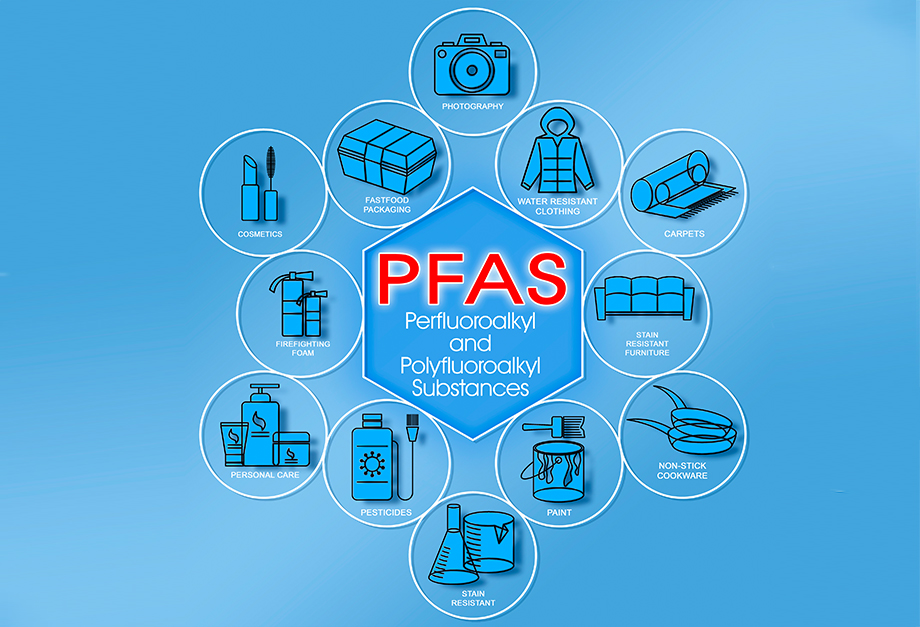What is Per- And Polyfluoroalkyl Substances (PFAS)?
PFAS, or per- and polyfluoroalkyl substances, are a group of man-made chemicals used in a wide range of products for their water- and grease-resistant properties. Despite their utility, PFAS are dangerous because they do not break down easily in the environment or the human body, earning them the nickname “forever chemicals.”
Prolonged exposure to PFAS has been linked to serious health issues, including cancer, liver damage, and developmental problems in children. Their widespread use and persistence have led to significant contamination of water sources, making PFAS a pressing environmental and public health concern.
PFAS are being investigated due to their widespread contamination and potential health risks. These chemicals persist in water, soil, and even human blood, with links to cancer, thyroid disease, immune disorders, and developmental issues in children. Their long-lasting presence and bioaccumulation pose ongoing threats. Researchers and regulatory agencies aim to understand their impact, find ways to reduce their presence, and protect public health and the environment.

U.S. Environmental Protection Agency:
Scientific studies have shown that exposure to some PFAS in the environment & certain products may be linked to harmful health effects in humans and animals.
What products contain PFAS?
PFAS can be found in many everyday products, from household items to camping gear and firefighting foam. This means that almost every American is exposed to PFAS daily.
Products that might contain PFAS include: non-stick cookware, cosmetics, cleaning products, food packaging, tents & camping gear, paints & varnishes, firefighting foam, carpets and more.
PFAS chemicals are very persistent and hard to destroy, which can harm the environment. It’s believed that drinking water across the United States has been contaminated with PFAS from runoff of firefighting foam and other products containing these chemicals.

PFAS Information Sources:
PFAS Explained by EPA
https://www.epa.gov/pfas/pfas-explained
Meaningful and Achievable Steps You Can Take to Reduce Your Risk (to PFAS)
https://www.epa.gov/pfas/meaningful-and-achievable-steps-you-can-take-reduce-your-risk
Toxic ‘forever chemicals’ ubiquitous in Great Lakes basin, study finds
https://www.theguardian.com/environment/article/2024/may/18/pfas-great-lakes-basin
